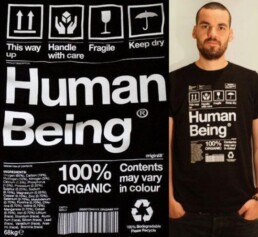Black Lives Matter: Then, Now & Always
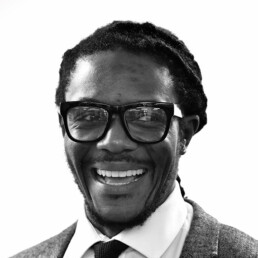
Written by Wayne Reid
Professional Officer & Social Worker
The murder of George Floyd is the latest in a long line of atrocities and brutalities endured by the global Black community. This has a long history. Longer than is sometimes convenient for honest acknowledgement. I notice some commentators are referring to George’s ‘death’, which is a dilution of what occurred. George was brutally murdered by a Police Officer and the world has seen the evidence.
The context to George’s murder is emotive and cumulative: the Amy Cooper ‘race grenade’; endless examples of police brutality cases in the US and UK; modern-day systems of oppression and the historic and ongoing the suppression of the effects of slavery and colonialism in mainstream education. These factors can accumulate and create an acute sense of anger and rage. These emotions can manifest into civil disorder and criminality. It has been evidenced that anarchic extremists are infiltrating protests to covertly fuel acts of looting and violence, which is then reported by the media in such ways to discredit the protesters. This detracts from the causal factors that have triggered the protests – and if we want to discuss looting, how about the longstanding looting of Africa’s natural resources?
As a Black British male social worker, I write this article on Black Lives Matter ‘wearing numerous hats’, as this issue affects me deeply both personally and professionally. Clearly, my opinion cannot and should not be understood as representing all Black and ethnic minority people/practitioners. We are not a homogenous group. It was important to me for my employer, the British Association of Social Workers (BASW), to publish our organisational position statements before I wrote this article, as I refuse to be the tokenistic ‘Black voice’ of BASW. I’m one of many Black voices in social work. It is my reality, that my role enables me to be heard more broadly than others.
I’m immensely proud of the authenticity and candour of BASW’s statements responding to George’s murder and in support of the fight against racialised discrimination.
Those who follow me on Twitter, or who are on my mailing list, will have observed my campaign to educate, empower and equip Black and ethnic minority people – and importantly our allies – with various information and resources.
On occasions, I have been outspoken about the delayed/weak position statements and responses from prominent social work leaders and organisations. Given that social work’s core values and ethics are deep-rooted in anti-oppressive practice and social justice, this eventuality has been particularly disappointing for me and many others within the profession. Sadly, these values and ethics appear sometimes to have been taken for granted, diluted or ignored in recent years/decades. Perhaps austerity has desensitised us? Overall, I’m sure Black and ethnic minority social workers and service-users will welcome the late (if weak) acknowledgements and platitudes from some of the social work elite. The statements will send a necessary message to employers and other stakeholders across the profession about the relevance of current world events to social work policy, practice and education. However, I think some of the statements could be strengthened by providing a clearer commitment to systemic reforms to eradicate all forms of racism through specific, measurable, achievable and realistic targets.
During the furore surrounding George’s murder, some individuals/organisations have recoiled at the suggestion they may be racist. “I’m not a racist!” is the common response. The accusations seemingly worse than the facts. I would argue that racism is not an absolute mindset, instead it’s a rather fluid one. There are degrees of racism. I imagine very few people reading this article would identify with extreme right-wing neo-Nazi racism, but many will have stereotypical views about certain ethnic groups which they project in everyday situations (if they are honest/self-aware). There is a structural and lazy acceptance, that ‘lower level’ prejudice and oppression are somehow separate – with the former being considered a less important issue. However, I believe if this changed it would engender a real decrease in the overt, violent forms of ‘race-related hate’.
In my view, the spectrums of white privilege and white supremacy are also broad – not absolute. This graphic here best describes my views. Fundamentally, there are a range of behaviours and oppressive systems that are socially acceptable, which we must address and redress to tackle racism effectively in all its ugly manifestations. For example, the statement ‘all lives matter’ is covert racism, as it ignores the history and current circumstances of Black people globally. Physical colonisation and slavery may no longer be acceptable or legal, but colonisation and slavery of the mind has been the norm since their abolition. Black lives matter applies then, now and always.
The recent misdemeanours of Dominic Cummings show us there are clear double standards; not just from a class perspective (which was perpetuated by the media) – but also through the lens of white privilege. I wonder how Raheem Sterling would have been portrayed flouting the lockdown rules.
Labels/terms such as Commonwealth, ‘hostile environment’, and ‘BAME’ need to be re-examined. BAME does not describe who I am. BAME is a clumsy, cluttered and incoherent acronym that is opportune for categorising people of colour as a homogenous group – when we quite clearly are not. Of course, I cannot speak for all people of colour. I understand that ‘BAME’ can be operationally helpful when exploring the overarching effects of all things racist. However, it misses so much nuance and subtlety, that it can be seized upon by those who wish to deny racism as a white problem. Routinely, I hear people comfortably stating that BAME people “can’t even agree amongst themselves”. This sloppy reductivism, leads to terms being invented such as ‘Black and Black’ crime. I have not heard about “White on White” crime – ever.
Some quarters consider having a small minority of people from Black and ethnic minority groups who reach positions of power (including within the current Cabinet), as progress, in and of itself. I respectfully disagree and would go so far as to say it is actually unhelpful in this case. I think a contingent of these people only seem to identify as being people of colour when it is expedient. Often, they have championed policies that in fact would have previously disadvantaged their own families – which is basically ‘pulling up the drawbridge’ and ‘morally bankrupt’. In some ways it is worse than having a ‘conventional racist’ at the helm. To quote Malcolm X: “I have more respect for a [person] who lets me know where [they stand], even if [they are] wrong, than the one who comes up like an angel and is nothing but a devil.” Politician’s have form for allowing their personal ambitions to override ethics and morality. Their denials can play beautifully into the hands of those who seek to maintain the existing order. As black and ethnic minority representation is disproportionately very low, these people do not necessarily use their power for good and structural inequalities remain unchanged.
At this current juncture in race relations, there has been much discussion about how ‘white allies’ can be ‘anti-racist’ and supportive to the cause. Of course, allies can be personal and/or professional. So, what is really behind those awkward smiles and sugary sympathy? Actions most definitely speak louder than words. It’s time for all well-intentioned platitudes and recycled rhetoric to be converted into meaningful activism and ‘root and branch’ reform. This weblink will provide allies with relevant resources on their journey.
‘Blackout Day’, on 07/07/20, is when Black and ethnic minority people (and their allies) will not spend any money (or if they must, only at Black businesses). This is so important, as it sends a strong message to the capitalist elite in the only language they understand – money. See this video for more information on ‘Blackout Day’. We must build on this impetus and momentum to be taken seriously.
It is imperative that social workers evaluate their roles and (moral and regulatory) responsibilities. Current race relations require social workers to be proactive and do our homework to stay contemporarily astute as allies to Black and ethnic minority colleagues and service-users. There are various opportunities through BASW to develop your expertise in this area with our Equality, Diversity & Inclusion Group, events, branch meetings and training programmes. Also, I will be leading a Black & Ethnic Professionals Symposium (BPS) for BASW members in the coming weeks, so do contact me at wayne.reid@basw.co.uk or @wayne_reid79 – if this is of interest.
We all know that organisations are at times avoidant of these issues, but as social workers we must recognise that silence on racism is complicity with the oppressors. BASW will not remain silent on this issue and we implore you to do the same.
‘One world, one race… the human race!’
Don't Tuck in Your Labels
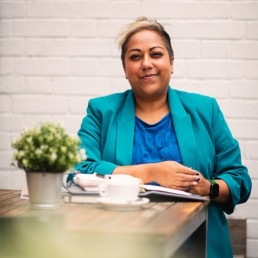
Written by Bennie Kara
Founder of Diverse Educators
Written January 7, 2018.
I am the woman that always has a clothes label sticking out somewhere. In any given day, some kindly person will reach behind me and tuck it in. And I, without fail, will apologise for that label and the fact that someone had to decide what to do with me.
You see, clothes labels are really useful things. They tell you what to do with the item. How to take care of it – how to fix the item if it is damaged in some way. It stays there as a reminder that the item needs to be nurtured. Lots of us become irritated by them – how many times have we cut the label out because we can’t forget it is there – perhaps it’s rubbing against our skin, making us feel uncomfortable. I do it all the time with the vain hope that people will not have to fix me up and make me presentable.
I have made many jokes over the years at various conference about winning the competition on how many labels I have. We categorise people in so many different ways and I have seen it as a laughing matter. So when I was thinking about my labels, I decided to create a pie chart of the make up of me. Mostly just in case my Maths teacher is watching – my Maths GCSE started with 30 mins of me panicking because I had forgotten how to draw a pie chart.
So if you want to see what my clothes label says – this is me.
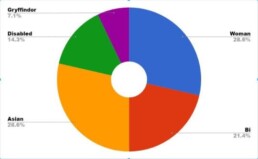
It took a long time to decide how much of me I could allocate to the different labels. I am a woman. Quite considerably so, according the number here. I am also equally Asian. It gets harder when I have to decide just how much of me is on the LBGT spectrum. I define as bisexual and have been in a relationship with a woman for a long time. All of these categories I have become comfortable with – while I know they present me with challenges, I have spent my life getting to know them.
I have come to know myself as a Gryffindor too. This is not in jest. I will not have anyone disagree. I’ve taken the test.
It is my last label that is more recent and perhaps the one I struggle with the most. I learned not long ago that I have hearing loss in both ears and it is more pronounced in my left ear. I will be wearing a hearing aid soon to help me function in loud spaces, to help me understand what people are saying when I can’t see their faces.
I mean, I know I’m a woman and can’t lift heavy things or be in charge of a boardroom. I know that I am Asian and therefore should probably be teaching Science and not English. I know that I am bisexual and this means I am greedy/just not willing to admit I am gay.
But I was not prepared to be disabled, albeit in a small way. In some ways I have to confront here my own misgivings about having a hearing impairment in a profession that is built on listening to children in order to teach them. I sat in a car park and cried. Because this female, Asian, bi person didn’t want another label – especially one that could literally mean people think I cannot do my job. How many glass ceilings for me?
It has taken time to adjust to it. It chafed. I could feel it rubbing. But I have left it there because it gives people another way to know me.
Some people will say: if we take away all labels, we can just be people. I absolutely agree. I want to be able to teach without any of those. At the risk of sounding like a below the line Daily Mail commentator, stop going on about your labels – it creates the victim complex. It’s not important to the way you teach, so just shut up and get on with it. Identity politics creates resentment. I resent you and your labels.
I don’t think any of us walk around with our labels on our sleeves. If teaching is a profession in which your authentic self is required for children and adults alike to connect and know you, if it a profession in which people are the centre then I do not want to lie, either overtly or by omission.
The average 18-44 year old lies twice a day. I am sure that you are sitting there thinking – well that’s low. I can smash that statistic by 9am in the morning on any given school day. But the lies I tell because I have to are now starting to grate.
There are things I can’t say, choose not to say, places I won’t ever visit with my partner – and it is exhausting making all of those decisions about who I can be when I am simultaneously juggling the demands of the curriculum, behaviour, marking, meetings, paperwork. Wouldn’t it just be easier for me and more real for the students if I didn’t have to think about my pronouns so carefully? Or worry about who is going to see me with my partner in the local area?
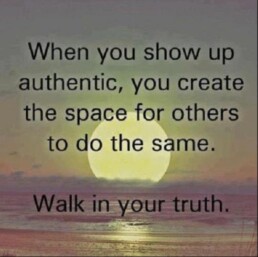
I spoke recently about the curriculum and how having diverse voices delivering content doesn’t take away from what we teach our students – when we teach the Ramayana or about Malian women’s contributions to local industry, we are not saying do not teach about Wordsworth or Dickens. Perhaps as a female, Asian, bisexual, disabled Gryffindor, I can enrich rather than detract. Hiring me, allowing me to be free within a role, means a better education. Not because I am better. But because I can bring my knowledge and still teach yours really quite well. There is enough oxygen for all of our stories, told with pride. Authenticity in teachers allows students to understand humanity in all of its guises. We actively prevent learning when we lie, when we omit.
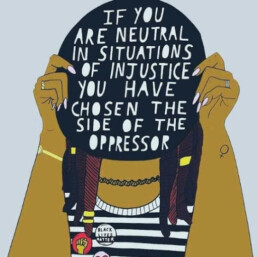
I have seen this quotation many times and it occurs to me that I no longer see it as being about other people. I see it as being about myself and about all of us that walk in different shoes. My silence about about me is collusion. I am colluding with the oppressor. It is unjust that I should be quiet, tuck in my labels to make everyone else feel comfortable, staff, students, parents alike. In remaining silent and not celebrating or sharing all of me as I am, I am complicit.
How can any of these things happen when we are silent?
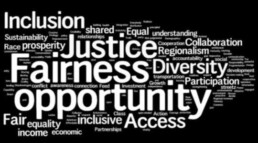
I am not asking anyone to stand up and shout from the rooftops about their sexuality, disability, gender or heritage. But I am asking you to stand, metaphorically speaking. And speak about your truths without fear. And perhaps, when you feel brave enough because you have a room full of people willing to support you – to act, in the way that makes you feel that you are authentic.
So, if you see me again and my labels are sticking out. Maybe don’t tuck them in.
Closing keynote: Diverse Educators Conference, 6th January 2018
